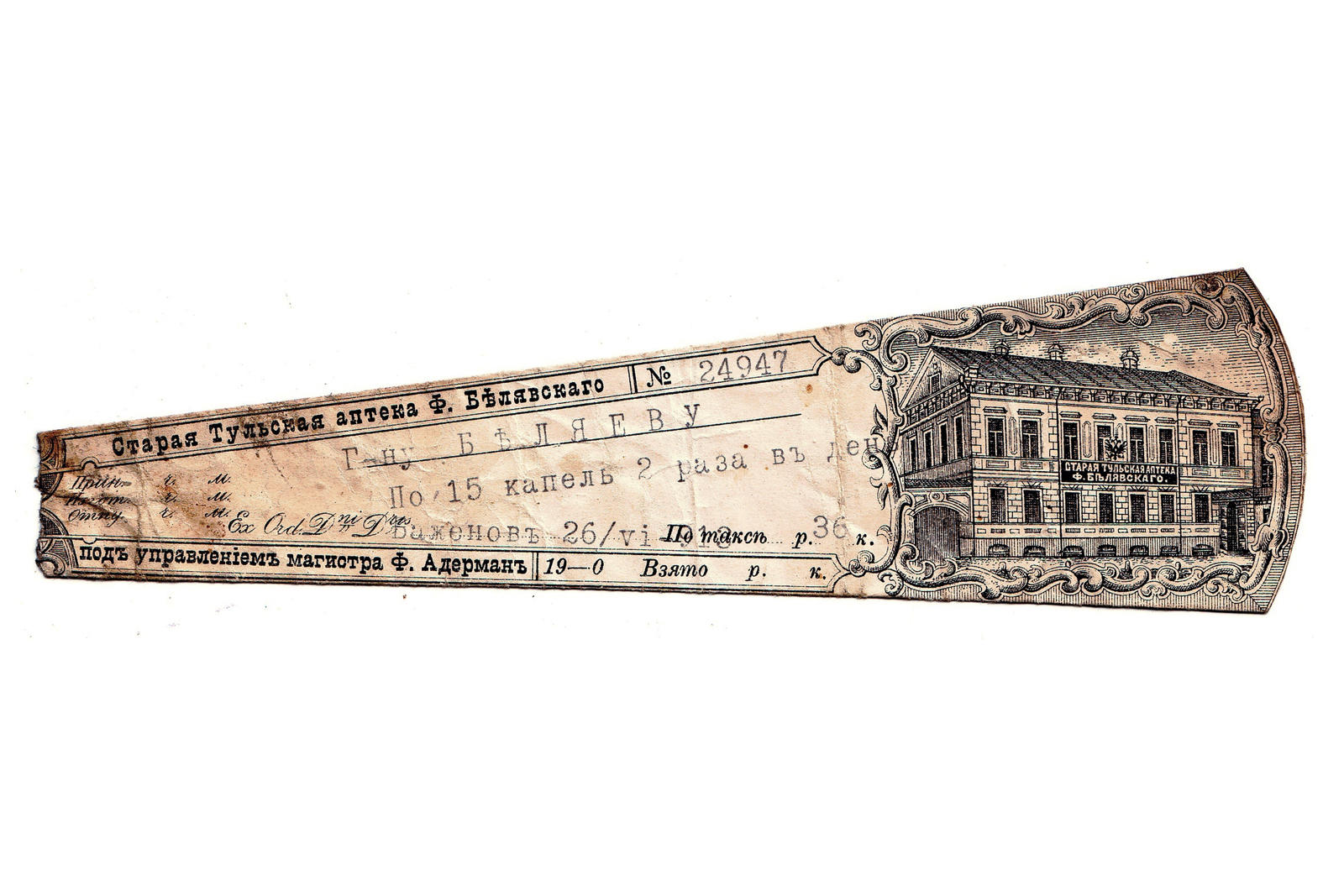The write-on label is a pharmacy paper label on vials and boxes of medicines. In the 19th — early 20th centuries, all pharmaceuticals were necessarily sold with them. An additional fee was charged for labels. The write-on label indicated the name and price of the drug, the method of administration, dosage, the name of the doctor, pharmacist, and pharmacy owner.
Under the instruction of the Medical Department of the mid-19th century, the pharmacist was obliged to dispense medicines on a prescription. The Russian word ‘recept’ (prescription) comes from the Latin ‘recipe’, which means ‘take’. There could be several prescriptions in one form, which were separated from each other by a special sign. This sign was originally placed at the beginning of the prescription, it meant ‘cum Deo’, that is, ‘With God’. It was believed that all business had to start only with God’s blessing, especially in medicine.
The write-on labels of private pharmacies were different, they were printed on order in a printing house. They were often supplemented with an image of the imperial eagle, a photo of a pharmacy, and a floral ornament. The color of the write-on label also carried certain information: white ones were attached to medicines for internal use, yellow ones — for external use. Blue labels were placed on jars with injection solutions. The write-on label was considered an important document. In 1908, Mr. Levy, the owner of a pharmacy in Yalta, was even taken into custody and fined 1000 rubles, because he incorrectly filled out the write-on label form — he wrote his initials in front of the state emblem.
In the Soviet years, when the most dangerous drugs were sold, the write-on label was issued to the buyer as a copy of the prescription. And the prescription itself remained with the pharmacist and had to be stored there for two years.
Such documents are still used in pharmacies, but only when releasing dangerous drugs. In the upper part of such papers, one can see the inscription ‘Write-on label’ and always a yellow stripe.
The write-on label presented in this exhibition was found in the attic of the Belyavsky House. It dates back to the time when Friedrich Aderman was the manager of the pharmacy. The building of the ‘Old Tula Pharmacy’ is depicted in the right part of the write-on label.



